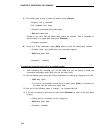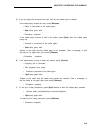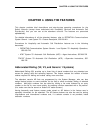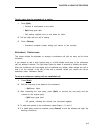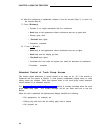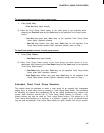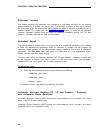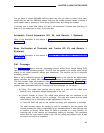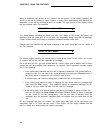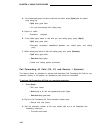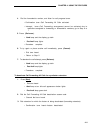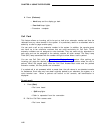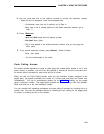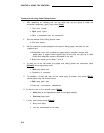
CHAPTER 4. USING THE FEATURES
You will place or extend AAR/ARS calls the same way that you place or extend other calls,
except that you dial the AAR/ARS access code and the outside number instead of dialing a
trunk access code or pressing a Trunk Group Select button and dialing the number.
If intercept tone is heard after dialing, the call is not authorized. If reorder tone (fast busy) is
heard or if the called party is busy, try the call later.
Automatic Circuit
Refer to the description
the System. ”
Busy Verification
Systems)
Refer to the description
the System.”
Call Coverage
Assurance (V2, V3, and Generic 1 Systems)
of this feature in Chapter 8, “Using The
of Terminals and Trunks (V2,
of this feature in Chapter 8, “Using The
Console To Troubleshoot
V3, and Generic 1
Console To Troubleshoot
The Call Coverage feature redirects unanswered internal and/or Direct Inward Dialing (DID)
calls to an alternate answering position. (The DID calls are placed by an outside caller and go
directly to the called extension without your assistance.) The console can be an alternate
answering position.
When a call is redirected through the Call Coverage feature to the console, the alphanumeric
display identifies the calling and called parties and shows a call purpose identifier (code).
(The call purpose codes are explained under “Alphanumeric Display Area” in Chapter 2 and
are repeated here.) The call purpose code tells you why the call was redirected. The call
purpose codes associated with Call Coverage and their meanings are as follows:
• b —Busy—The called voice terminal user is active on a call, and the called voice
terminal has a temporarily bridged appearance of the call.
• d —Doesn’t Answer or Cover—The called voice terminal was not answered or the
calling system user sent the call to coverage.
This code also” means that the called
voice terminal has a temporarily bridged appearance of the call.
•
s —Send All Calls—All calls to this number are being sent temporarily to coverage.
The most common reason for sending all calls to coverage is that the person who
normally answers the calls is unavailable for an extended period of time (perhaps due
to vacation or illness). When Send All Calls is activated at a voice terminal, all
incoming calls to that terminal will immediately redirect to coverage. This redirection
means that the voice terminal doesn’t ring, and the calling party doesn’t have to wait
so long for the call to be answered.
4-7



